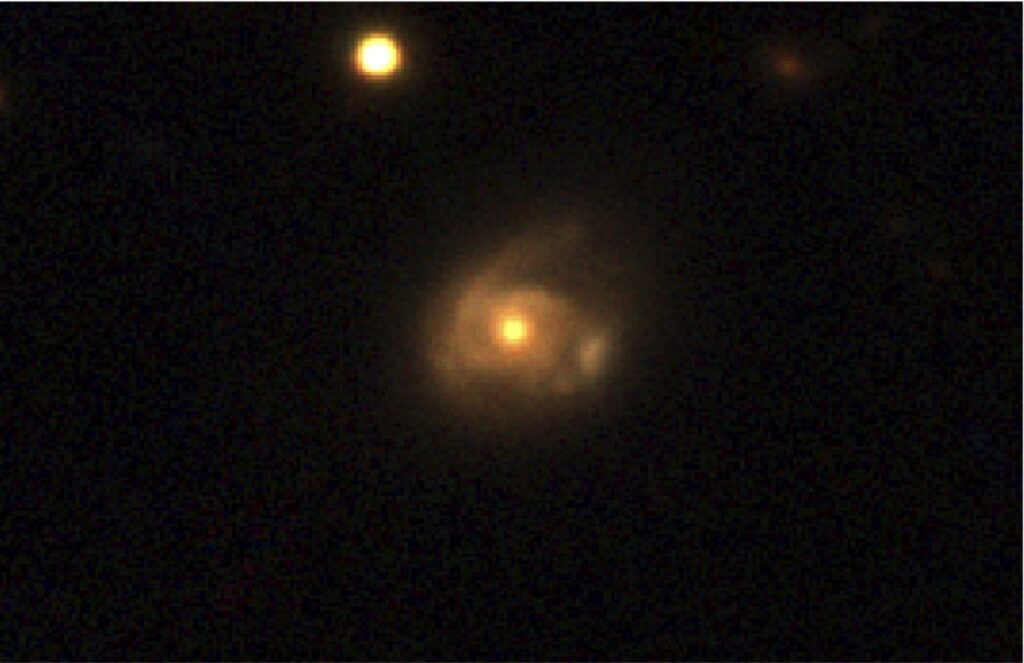Thanks to the Swift space telescope, British astronomers could study in unprecedented detail the process of “feeding” a black hole. Periodically, it “bites off” the substance of the star located next to it.

It all started with the registration of a bright X-ray flare emanating from the galaxy 2MASX J02301709+2836050 located at a distance of about 500 million light-years from the Milky Way. Using the Swift telescope, the researchers were able to detect the source of the radiation. It received the designation Swift J0230. Further observations showed that instead of the expected fading, the object shone brightly in the X-ray range for 7-10 days and this process was repeated every 25 days.
After analyzing the available data, scientists came to the conclusion that the source of the flashes is a black hole, whose mass is about 200 thousand times greater than the mass of the Sun. A sun-like star moves around it in an elliptical orbit. Every time a star passes the pericenter of its orbit, a black hole “bites off” a piece of matter from it, which mass is equivalent to three masses of the Earth. Heated to two million degrees, the material then emits a huge amount of X-rays.
To test this assumption, scientists taught the old telescope (Swift was launched in 2004) new tricks. They have created a program that compares images of the sky with previous images. If there is a sharp change in the level of X-ray radiation, astronomers receive a notification.
The automated system allowed astronomers to quickly coordinate additional observations of the desired region and record new flares caused by the “snacks” of the black hole. To date, this is the first time that scientists have been able to see the process of partial absorption of a star. Before that, they recorded only the events of complete tidal destruction, when black holes completely absorbed unlucky luminaries.
According to https://phys.org
Follow us on Twitter to get the most interesting space news in time
https://twitter.com/ust_magazine

